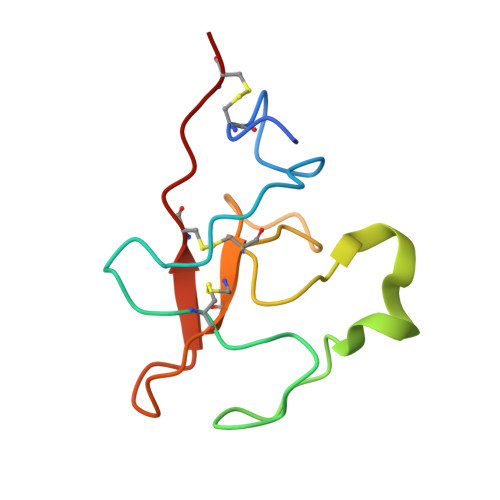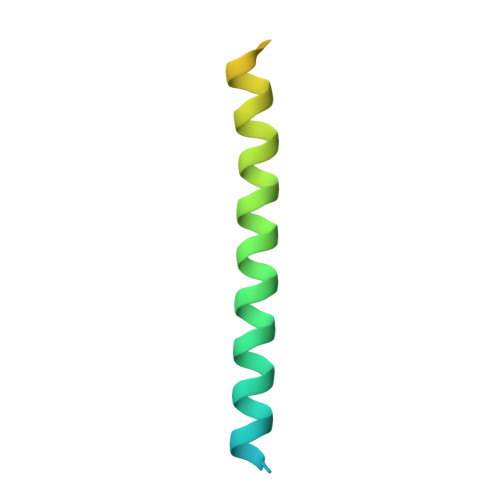Structure and Function Characterization of the a1a2 Motifs of Streptococcus pyogenes M Protein in Human Plasminogen Binding.
Quek, A.J.H., Mazzitelli, B.A., Wu, G., Leung, E.W.W., Caradoc-Davies, T.T., Lloyd, G.J., Jeevarajah, D., Conroy, P.J., Sanderson-Smith, M., Yuan, Y., Ayinuola, Y.A., Castellino, F.J., Whisstock, J.C., Law, R.H.P.(2019) J Mol Biology 431: 3804-3813
- PubMed: 31295457
- DOI: https://doi.org/10.1016/j.jmb.2019.07.003
- Primary Citation of Related Structures:
6OG4 - PubMed Abstract:
Plasminogen (Plg)-binding M protein (PAM) is a group A streptococcal cell surface receptor that is crucial for bacterial virulence. Previous studies revealed that, by binding to the kringle 2 (KR2) domain of host Plg, the pathogen attains a proteolytic microenvironment on the cell surface that facilitates its dissemination from the primary infection site. Each of the PAM molecules in their dimeric assembly consists of two Plg binding motifs (called the a1 and a2 repeats). To date, the molecular interactions between the a1 repeat and KR2 have been structurally characterized, whereas the role of the a2 repeat is less well defined. Here, we report the 1.7-Å x-ray crystal structure of KR2 in complex with a monomeric PAM peptide that contains both the a1 and a2 motifs. The structure reveals how the PAM peptide forms key interactions simultaneously with two KR2 via the high-affinity lysine isosteres within the a1a2 motifs. Further studies, through combined mutagenesis and functional characterization, show that a2 is a stronger KR2 binder than a1, suggesting that these two motifs may play discrete roles in mediating the final PAM-Plg assembly.
- ARC Centre of Excellence in Advanced Molecular Imaging, Department of Biochemistry and Molecular Biology, Monash Biomedicine Discovery Institute, Monash University, Clayton, Victoria 3800, Australia.
Organizational Affiliation:

















